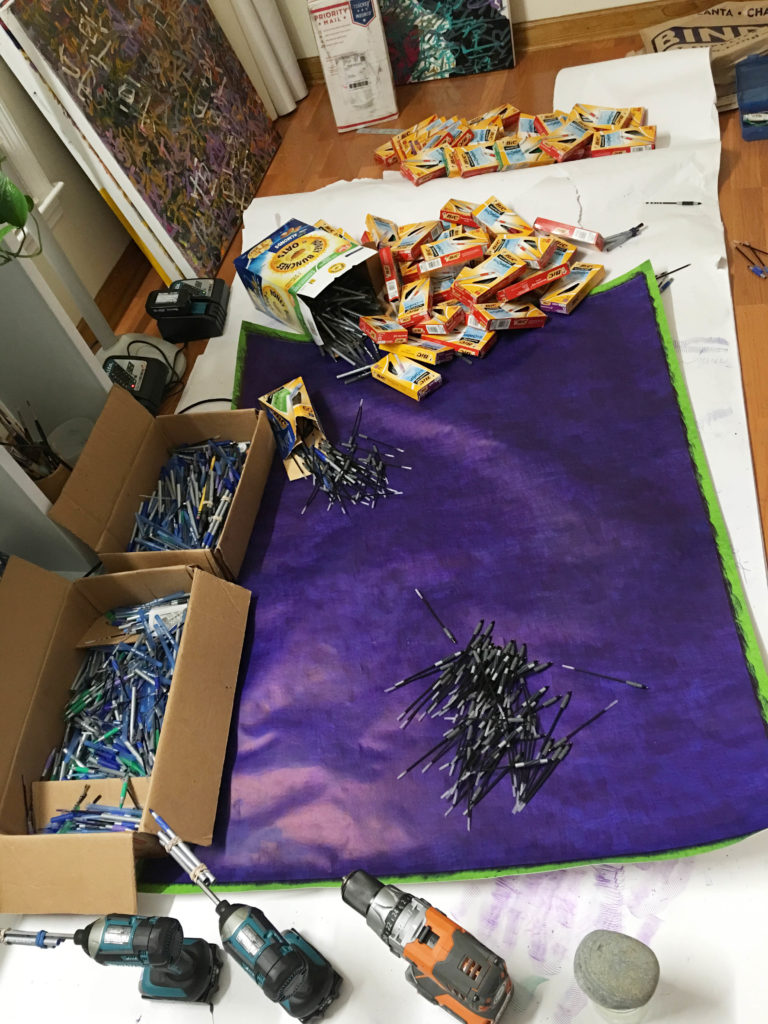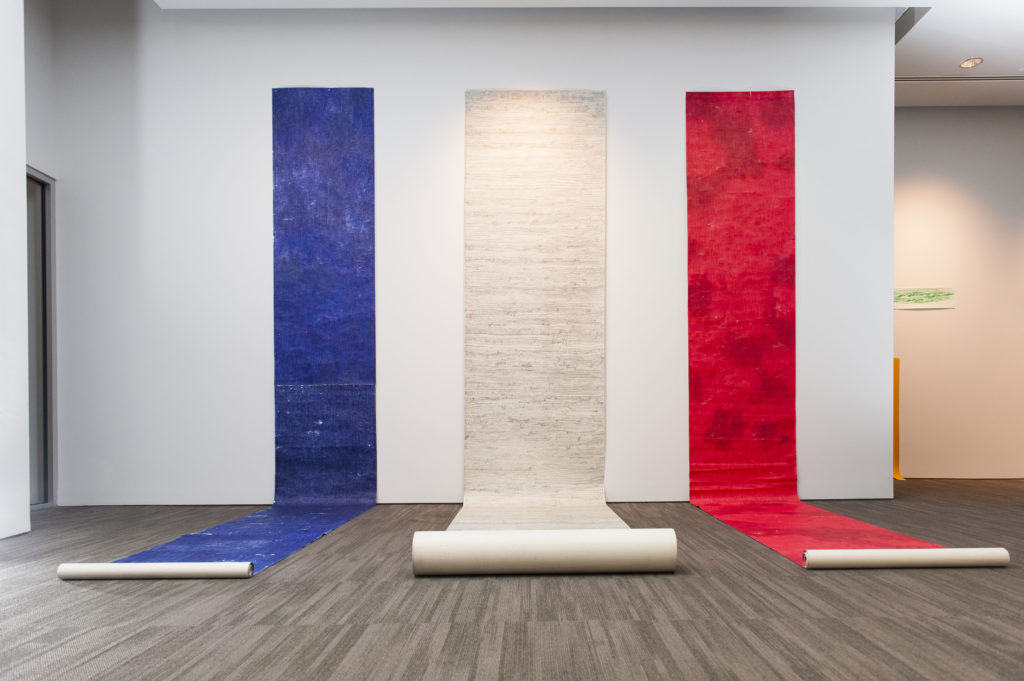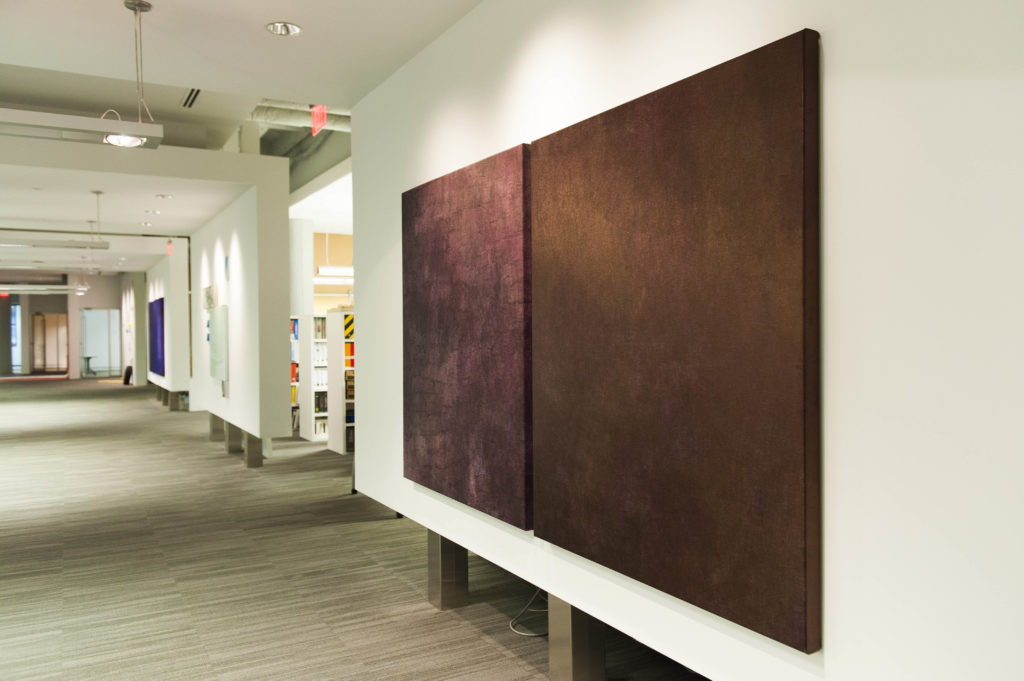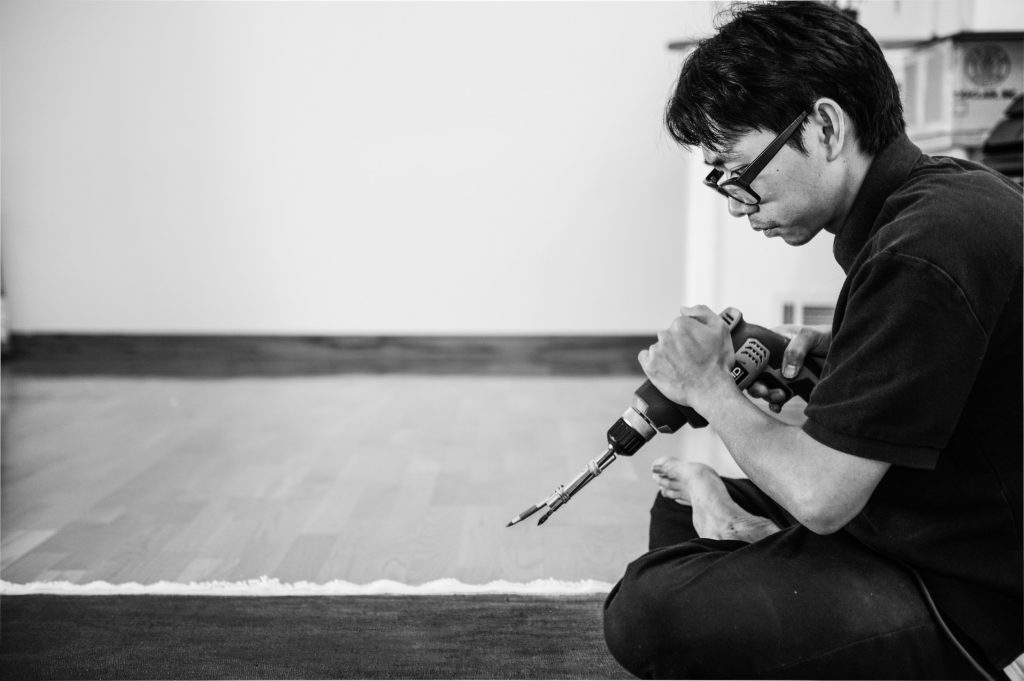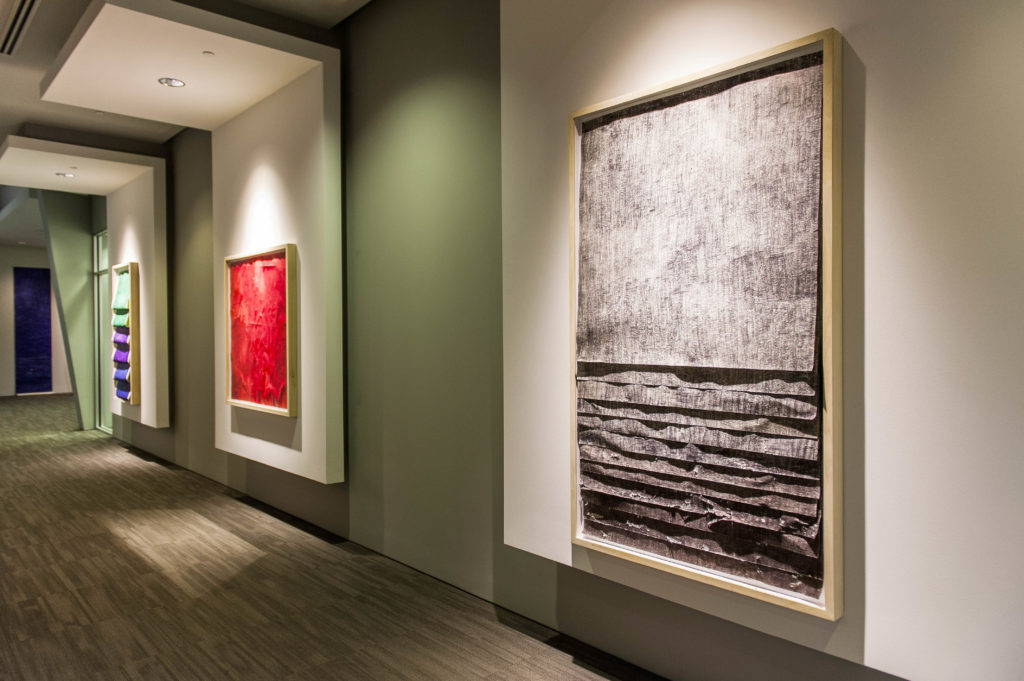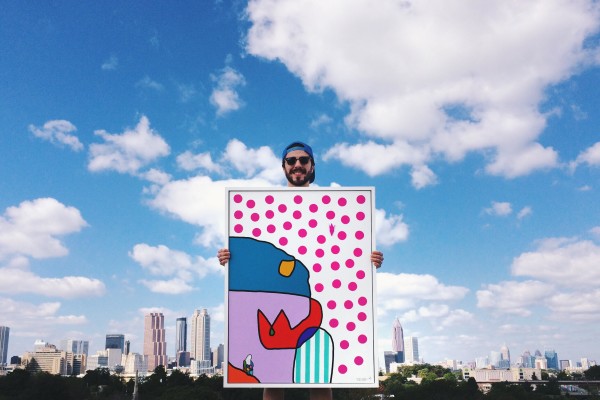Vietnamese-American artist Lynx Nguyen didn’t end up in Atlanta by choice. A computer decided where he and his family would move in 1993 when they were given the opportunity to leave communism behind in Vietnam and immigrate to the United States. As with many immigrants in the U.S., Nguyen’s life wasn’t easy before or after he arrived, but his determination and relentless work ethic have led him to successful solo shows and promising future exhibitions.
Nguyen’s art can seem like a testament to the physical and mental hardships he has had to endure in his lifetime. The artist, who works three jobs, spends upwards of 16 uninterrupted hours cross-legged on the floor while putting small pen marks on paper until the space is “painted” with ink.
CommonCreativ chatted with Nguyen about what it takes to create this amazingly detailed work, his medium of choice, and how he prefers to celebrate after completing a piece.
CommonCreativ: Tell me about what brought you to Atlanta.
Lynx Nguyen: We came to Atlanta to escape execution and communism. My father was a commander for South Vietnam, and he fought for democracy. After South Vietnam fell to communism, my father was put in jail for about 8 years. In 1992, the U.S. government allowed [us] to permanently move to the States. The way we were “shipped” here [to] Atlanta is very interesting. It was through a random computerized system. Basically, there were three major cities that we could be shipped to, and we could not choose where we wanted to be. It would be either New York City, Los Angeles, or Atlanta. I remember my parents wanted to be in NYC and LA, because most of our friends were there. We got shipped to Atlanta in the worst season, (in the 1993 “Storm of the Century”, where there was three feet of snow) and in the worse part of Atlanta (we were in an apartment next to a drug lord — every night there were gunshots and police sirens outside of our door).
CC: You’ve worked with various mediums such as watercolor and oil painting. What inspired you to work specifically with ballpoint pens?
LN: For a long time, I saw art as career, like any other job where you work 9-to-5 to make a living. So I focused mostly on still life and portrait art, working mainly with watercolor, acrylic, and oil. I felt like representational artwork connected to people easily and [I assumed it was] an easier way to make money. However, after two years of vigorous painting and not selling any artwork, I felt like a complete failure! I had no clue about the business of art and no experience in finding venues to exhibit my work. So I decided to go to to grad school at SCAD.
SCAD encourages students in the direction of contemporary art, so I let go of my insecurities and opened up to a new challenge. I [started working with] the ballpoint pen because I was searching for the most ordinary item to make art. In today’s culture, artists always go for the “WOW” factor. They want to make their artwork stand out, or find a unique and creative way to make a big impact. For me, I try not to focus on the visual aspect of art, but how to touch people’s hearts on a deeper level. The Enlightened Saint once said, “sincerity can touch a person’s heart,” so that is my direction when making work. I see the ballpoint pen as a perfect channel to connect to other people because everyone uses it and yet not everyone is aware of its beauty. Now, whenever a person who has seen my work picks up a ballpoint pen and begins to write, our hearts connect. At least that is my goal.
CC: What’s the physical process of creating your pieces?
LN: Before I start, I decide on a set of time to make the work: four, eight, 12, or 16 hours. Then I commit to sit for the entirety of that time. I have three jobs so sometimes it is hard to commit to a longer sitting, and the only time I have available to do the work is between 12AM and 6AM. I spend most weekends sitting as long as 16-plus hours to make my work. The process is labor intensive.
I have attached three ballpoint pens to a drill bit which connects to a high-speed drill to make tally marks. Yes, that is the core of my work — making millions of tally marks in ballpoint pen. I go through seven battery-operated commercial drills, and at least three commercial corded drills in one sitting to make my work. The reason for this many drills is because drills are not made for continuous use. They get overheated quickly, so I have to switch drills in between and also allow time for the battery to recharge. With a high-speed drill, I can make 4,000 tally marks per minute. In eight hours I can produce a drawing with 1,920,000 tally marks. The drills are heavy in my hands over a long period of time, but that is part of the discipline. I use mainly paper and pen for their simplicity and mundane quality and also it teaches me how to have greater focus and an efficient lifestyle without distraction.
CC: What’s your environment like when you’re working on pieces?
LN: I don’t listen to music or engage in any activity while making the work, because I don’t want to miss opportunities. My work requires focus. I need to know what is going on with the paper, the sensitivity of the drill, the pattern of mark making, every little component must be understood; otherwise it is hard to improve. I usually don’t meditate and I try not to make my work go in the direction of a meditative process. When I make work, I always try to make the worst painting. It sounds ridiculous, but that is the truth. I cannot compete with the world; there are so many great artists and great paintings. I just let go of the result; I’m just making for the sake of making. I don’t pay attention to my mind, or try to learn new form of sitting. When I wake up, I make the work, and when I’m exhausted, I just sleep.
CC: Do you celebrate when you’ve finished a piece that has taken you hours of hard work to complete?
LN: When I finish a piece, I do celebrate — by working harder and pushing new boundaries. I feel very fulfilled when I do my work, so there is no setback or side effect. I always say to myself, “How could I make my work better?” Usually, after I complete a piece, I start a bigger one. Either by increasing the size, experimenting with new material, or coming up with a new way to install it. The most important part of my work is to maintain the momentum. My type of work is about internal reflection, so it is like a mind game. You must always stay on top of the game or else it is easy get bored or get discouraged.
CC: What was your artistic highlight of last year, and what can we look forward to from you in 2017?
LN: 2016 was the year I got out of school — I was broke and Sallie Mae started calling to collect their debt. I was desperate to get my foot into the art world, so I was willing try anything. I [started] work at three jobs so that I could earn enough money just to apply for art shows. It is kind of sad that these days a majority of galleries and museums charge [to allow you to exhibit your work]. I would sometimes spend $400 a week just to apply for shows. Once in a blue moon, I got accepted to a show, but that is the kind of risk I had to take to get myself out there. 2017 has been the year for me to review my body of work and to refine my strategy. My goal has always been getting into high-end galleries and museums. This year I want to focus mainly on larger scale work, focus on materials and technique, and think about why someone would want to spent $10K or more on my artwork. I’ve had a lot of breakthroughs this year:
1. I discovered the largest handmade paper, which I purchased for $1,000 a sheet, so I was excited about it, and 2. I discovered a way to layer ballpoint pen ink on canvas to build up over 14 layers of ink. 3. I discovered a brand new material that can accept ink buildup and actually comes in the size of 80 inches and bigger, which is absolutely thrilling.
I built a bit of a reputation in 2016, so in 2017 I mainly want to focus more on solo and museums shows. I have met with the Zuckerman Museum curator and soon will meet with Susan Bridges from Whitespace and Michael Rooks from the High Museum, so I just keep my fingers crossed. My wish for this year is to have a show with Yayoi Kasumi’s “Infinite Mirrors” which is coming to the High Museum soon. I think that we would make a killer show!

